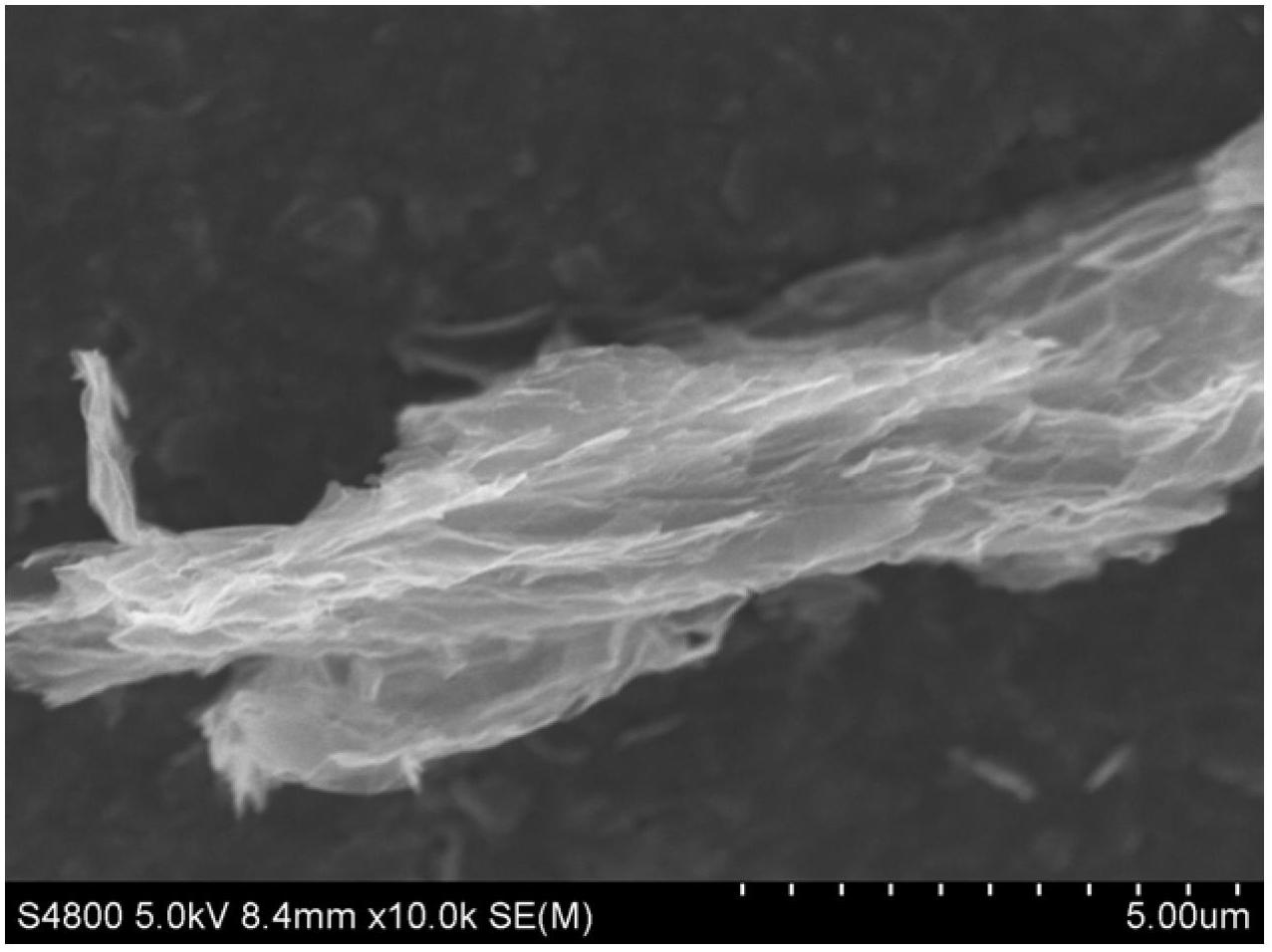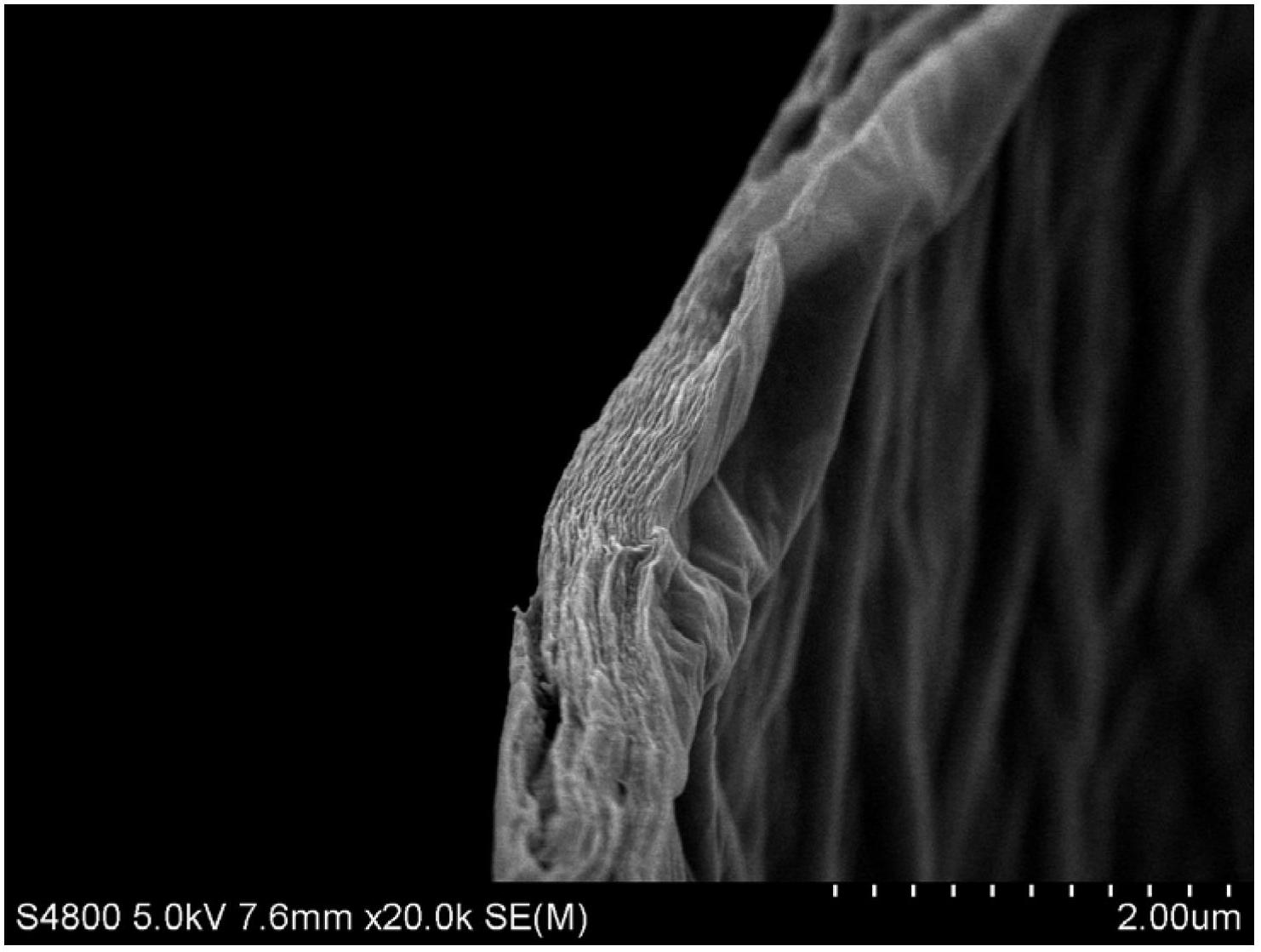Method for preparing graphene/polymer composite material based on infrared irradiation
An infrared and polymer technology, applied in the field of preparation of graphene/polymer composite materials, can solve the problem of difficulty in obtaining uniformly dispersed graphene/polymer composite materials, unsuitable for large-scale preparation of graphene, graphene sheet size and thickness Difficult to control and other problems, to achieve the effect of being conducive to popularization and utilization, low production cost, and high heat conversion efficiency
- Summary
- Abstract
- Description
- Claims
- Application Information
AI Technical Summary
Problems solved by technology
Method used
Image
Examples
preparation example 1
[0033] After 3g graphite, 3g sodium nitrate, 60mL concentrated sulfuric acid (98%) and 6g potassium permanganate were reacted at 35°C for 2 hours, 100mL deionized water was added, and then 3% hydrogen peroxide was added. 200mL of hydrogen oxide aqueous solution, after standing for 12 hours, pickling and water washing to obtain graphite oxide gel. The graphite oxide colloid is vacuum-dried or freeze-dried at room temperature 25°C to obtain graphite oxide solid. An infrared heating lamp with a power of 275W is used to irradiate the graphite oxide solid at a distance of 10 mm for 1 minute, and a reduction reaction occurs to obtain a reduced graphite oxide solid. The scanning electron micrograph of the reduced graphite oxide solid is like figure 1 As shown, it can be seen that the reduced graphite oxide obtained under this condition has a loose and porous structure, indicating that the reduction process is relatively violent and a large amount of gas is released. The X-ray diffrac...
Embodiment 1
[0034] The graphite oxide aqueous solutions in Examples 1-16 are all obtained by dissolving the graphite oxide solid prepared in Example 1 in deionized water.
[0035] Example 1
[0036] 1) Mix 200 parts of graphite oxide aqueous solution with 0.5% by weight of graphite oxide and 10 parts of polyvinyl alcohol aqueous solution with 10% by weight of polyvinyl alcohol. The number average molecular weight of polyvinyl alcohol is 1799. After mixing uniformly, the mixed solution is obtained, poured into a sample tank, dried in an oven at 70°C for 12 hours, and dried until the weight percentage of the total solvent is equal to 35% to obtain a graphite oxide / polyvinyl alcohol composite film (composite product) , The composite film is non-conductive;
[0037] 2) Use an infrared heating lamp with a power of 275W to irradiate the graphite oxide / polyvinyl alcohol composite film at a distance of 100 mm from step 1) for 30 minutes to obtain 1.5 parts of conductive reduced graphite oxide / polyvinyl...
Embodiment 2
[0039] 1) Mix 100 parts of the graphite oxide aqueous solution with 0.5% by weight of graphite oxide and 1 part of the aqueous solution with 10% by weight of polyvinyl alcohol, where the number average molecular weight of polyvinyl alcohol is 5000, and stir well After obtaining the mixed solution, the mixed solution was diluted with water to the weight percentage of graphite oxide in the mixed solution to 0.01%, 0.02%, 0.05%, 0.1%, 0.2% and 0.4%, and 10 parts of the diluted mixed solution were taken. Cast on the surface of quartz glass, dry in an oven at 70°C for 12 hours, and dry until the weight percentage of the total solvent is equal to 25%, to obtain a graphite oxide / polyvinyl alcohol composite film (composite product), which is non-conductive of;
[0040] 2) Use an infrared heating lamp with a power of 275W to irradiate the graphite oxide / polyvinyl alcohol composite film for 30 minutes at a distance of 100 mm from the graphite oxide / polyvinyl alcohol composite film in step ...
PUM
| Property | Measurement | Unit |
|---|---|---|
| electron mobility | aaaaa | aaaaa |
| translucency | aaaaa | aaaaa |
| electrical resistivity | aaaaa | aaaaa |
Abstract
Description
Claims
Application Information
 Login to View More
Login to View More - R&D
- Intellectual Property
- Life Sciences
- Materials
- Tech Scout
- Unparalleled Data Quality
- Higher Quality Content
- 60% Fewer Hallucinations
Browse by: Latest US Patents, China's latest patents, Technical Efficacy Thesaurus, Application Domain, Technology Topic, Popular Technical Reports.
© 2025 PatSnap. All rights reserved.Legal|Privacy policy|Modern Slavery Act Transparency Statement|Sitemap|About US| Contact US: help@patsnap.com



